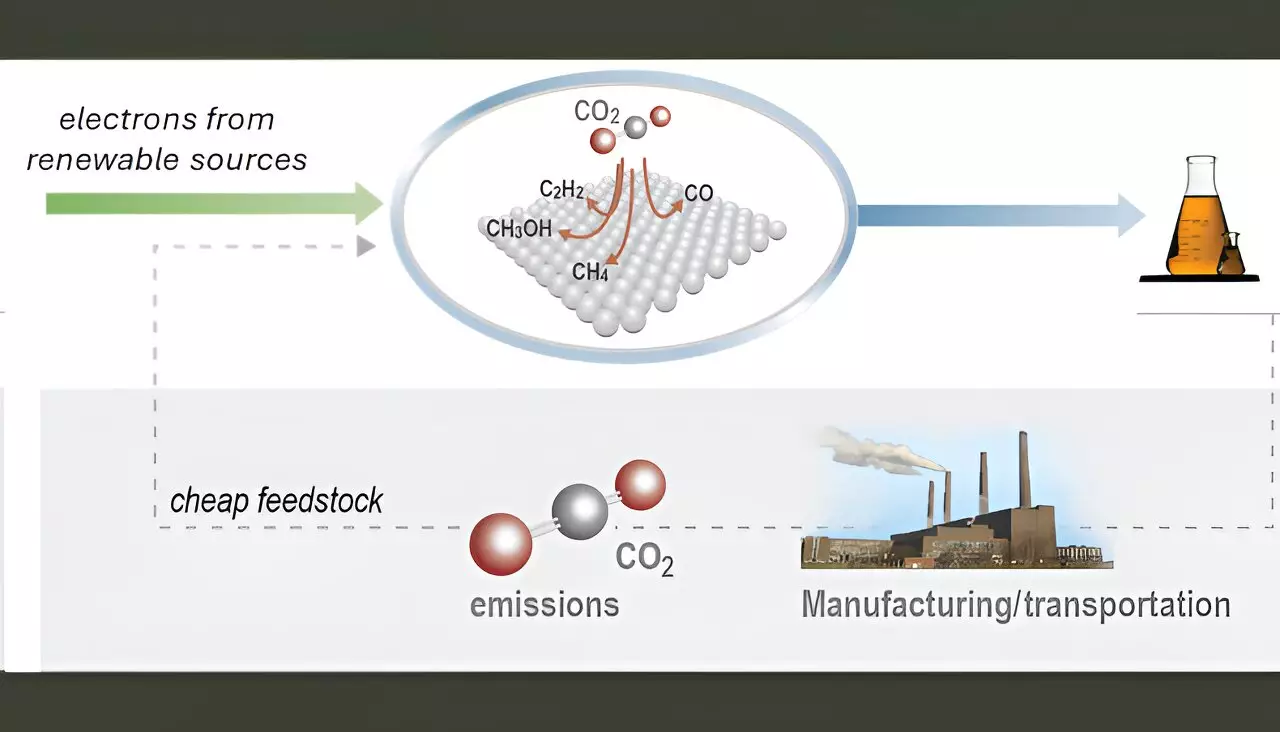The pressing need to address climate change has triggered an upsurge in research focused on converting greenhouse gases, particularly carbon dioxide (CO2), into valuable chemicals and fuels. By coupling CO2 electrochemical conversion with renewable electricity sources such as solar and wind energy, the potential exists to create an environmentally friendly production pathway for high-demand chemical feedstocks and transportation fuels. The production of critical compounds like ethylene, ethanol, and acetic acid signifies the intersection of sustainability and industrial utility. These compounds not only serve as essential materials for the chemical industry but offer viable alternatives to fossil fuels in vehicles.
The Challenge of Catalyst Development
Despite the promising avenues for CO2 utilization, the commercial viability of these technologies remains undermined by significant challenges related to catalytic performance. Electrolyzers, devices that facilitate electrochemical reactions, require catalysts that exhibit high stability and selectivity under industrially relevant current densities. Historically, research has primarily focused on optimizing the design of electrolyzers themselves, often overlooking the critical role of catalysts in the overall efficiency of the CO2 conversion process. Recent advancements have illustrated the predominance of copper and its alloys in efficiently converting CO2 to multi-carbon products, but inefficiencies related to catalyst performance and integration approaches persist.
Recently, a team from the Lawrence Livermore National Laboratory (LLNL), in conjunction with renowned institutions such as the University of Delaware, Washington University, and the University of Pennsylvania, alongside the industry partner Twelve Benefits Corporation, has developed an innovative catalyst coating platform utilizing physical vapor deposition (PVD). This technique offers unparalleled control over factors such as coating thickness, composition, morphology, and porosity—elements that are pivotal in catalysis research. PVD allows for the fine-tuning of catalyst properties while maintaining the integrity of the integration into electrolyzers, a crucial advancement in the quest for scalable and efficient CO2 conversion technologies.
The LLNL team’s concerted efforts have revealed the potential of copper-based dilute alloy catalysts, which are often challenging to synthesize using traditional methods. This research leverages theoretical frameworks to optimize the energy landscape of CO2 electrolysis, enabling effective transformation of carbon monoxide intermediates into sought-after multi-carbon products. By elucidating the relationship between catalyst composition and reaction efficacy, researchers can drive the development of highly efficient catalytic systems that advance the sustainability agenda.
In terms of operational efficiency, the PVD technique presents a notable advantage over conventional electrodeposition methods. It boasts a reduced production waste footprint while demanding less labor input, which translates into favorable economics despite the initial higher capital investment. This cost-effectiveness complements the global shift towards sustainable production methodologies, making it an attractive option for industries looking to decrease their carbon footprint while delivering market-relevant chemical products.
The implications of these developments in catalyst design and synthesis extend beyond the laboratory and potentially transform the chemical and transportation sectors. As industries increasingly seek sustainable solutions amidst growing environmental concerns, the effective utilization of CO2 for chemical production stands as a beacon of innovation. The work led by LLNL and its collaborators is set to pave the way for further advancements, propelling the field toward scalable solutions that capitalize on renewable energy sources. Continued exploration of catalyst materials and optimization strategies will undoubtedly forge pathways to a greener and more sustainable future, demonstrating that CO2 could indeed serve as a vital resource rather than a mere waste product in our quest for sustainability.

